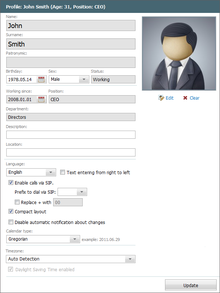A “User Profile” is a digital or physical record that encapsulates an individual’s interactions and preferences within a system. These profiles, which began as passports in the 1920s, have evolved with the digital age to encompass a wide range of platforms, from redes sociais[2] like Instagram[3] to operating systems such as Windows and MacOS. User profiles offer insights into user behavior, aiding in aspects like influencer marketing[1] and e-commerce recommendations. They also serve as crucial identifiers in forms like passports and driver’s licenses. However, with the growing concern over data privacidade[4], especially in the wake of scandals like Cambridge Analytica, the importance of safeguarding user profile data has come to the fore.
A user profile is a collection of settings and information associated with a user. It contains critical information that is used to identify an individual, such as their name, age, portrait photograph and individual characteristics such as knowledge or expertise. User profiles are most commonly present on redes sociais websites such as Facebook, Instagram, and LinkedIn; and serve as voluntary digital identity of an individual, highlighting their key features and traits. In personal computing e sistemas operativos, user profiles serve to categorise files, settings, and documents by individual user environments, known as ‘accounts’, allowing the operating system to be more friendly and catered to the user. Physical user profiles serve as identity documents such as passports, driving licenses and legal documents that are used to identify an individual under the legal system.
| User Profile | |
|---|---|
| Personal data | |
| Purpose | Highlight user information and characteristics |

A user profile can also be considered as the computer representation of a user model. A user model is a (data) structure that is used to capture certain characteristics about an individual user, and the process of obtaining the user profile is called user modeling or profiling.